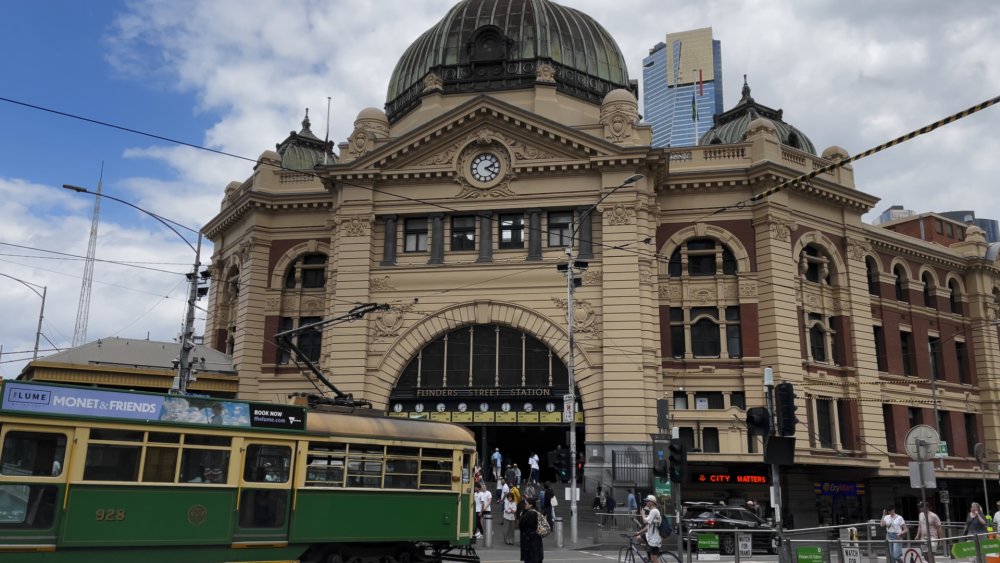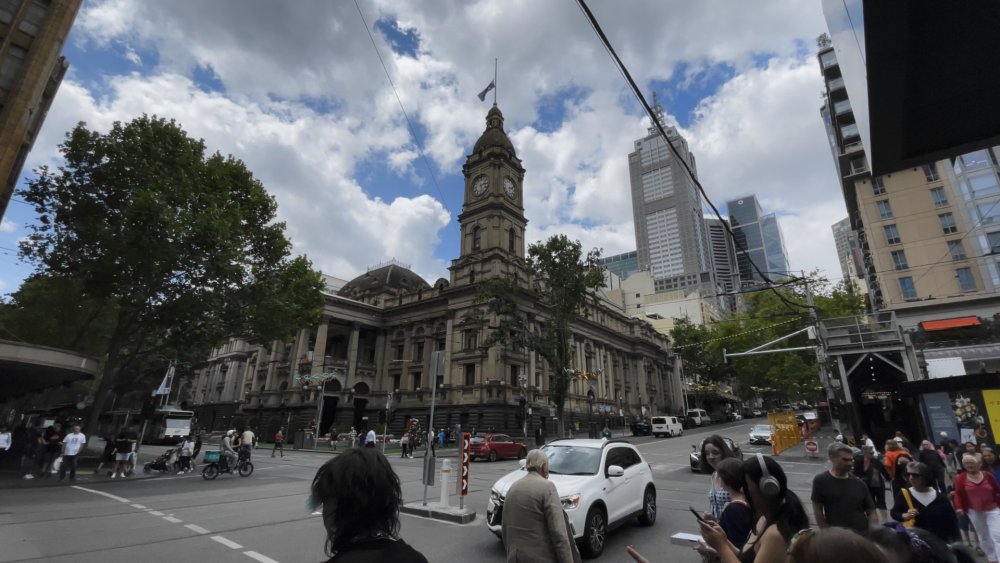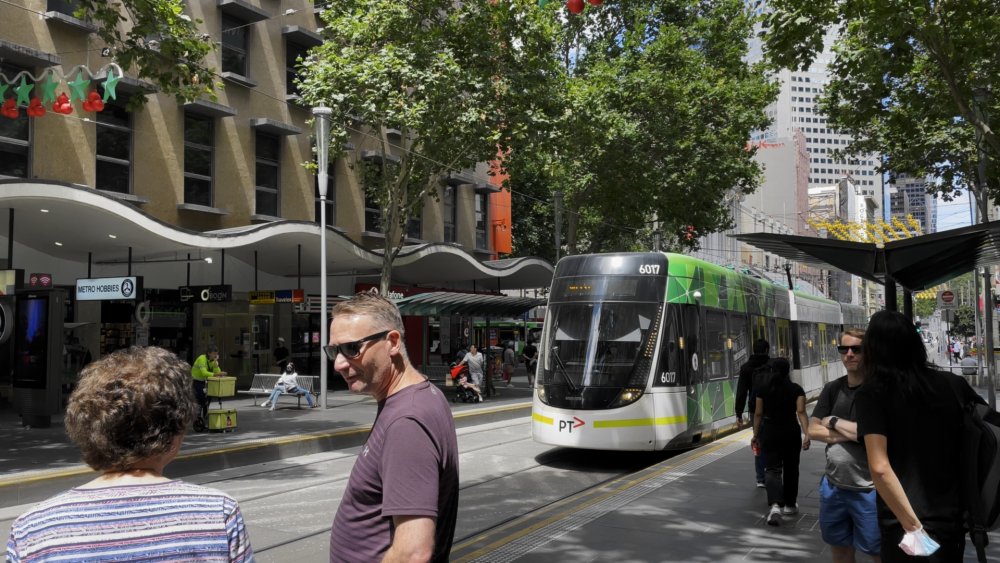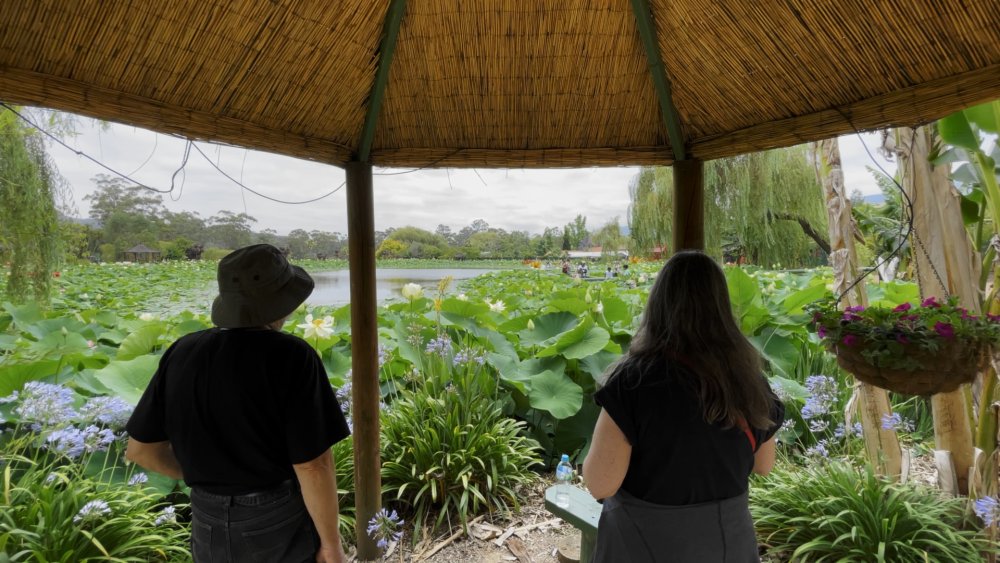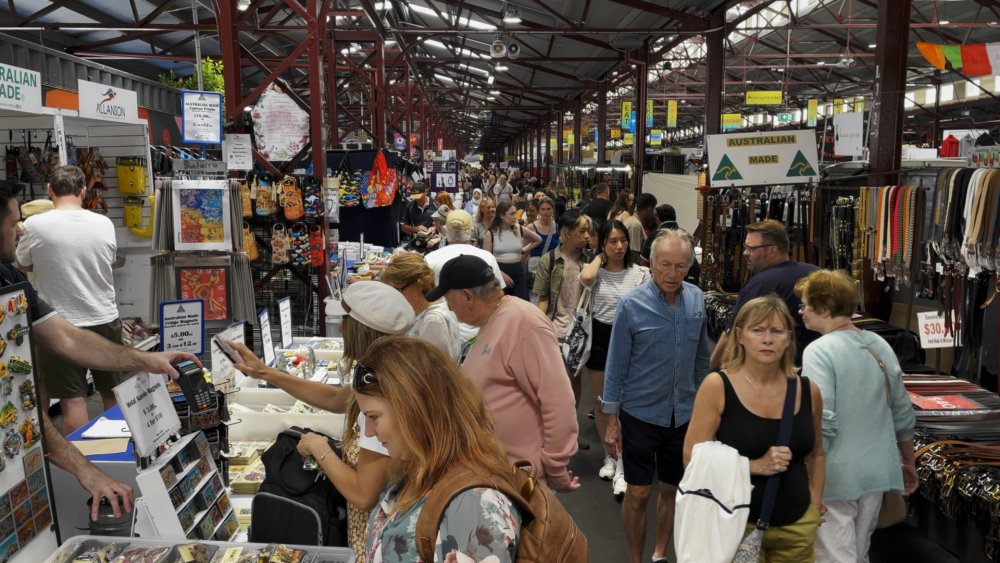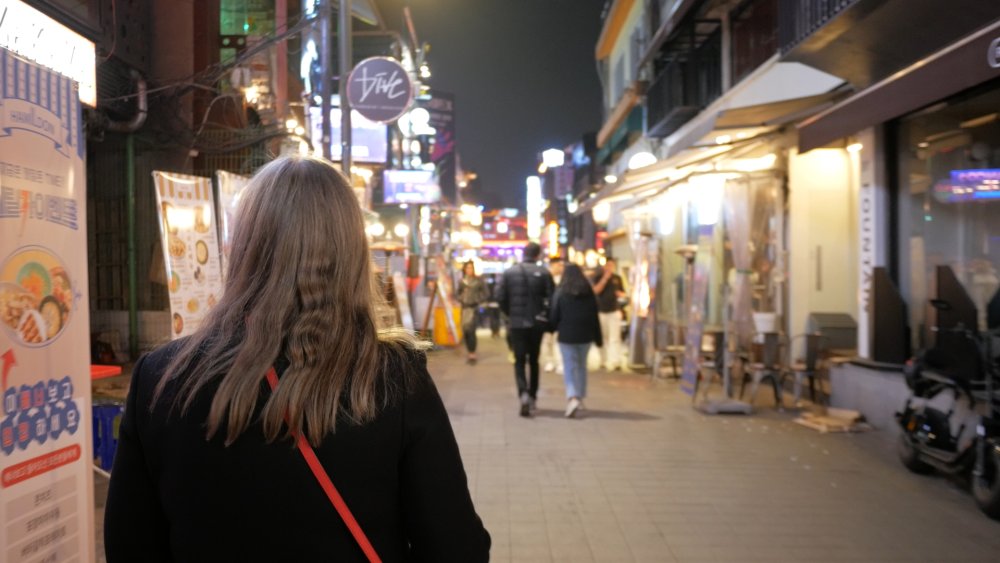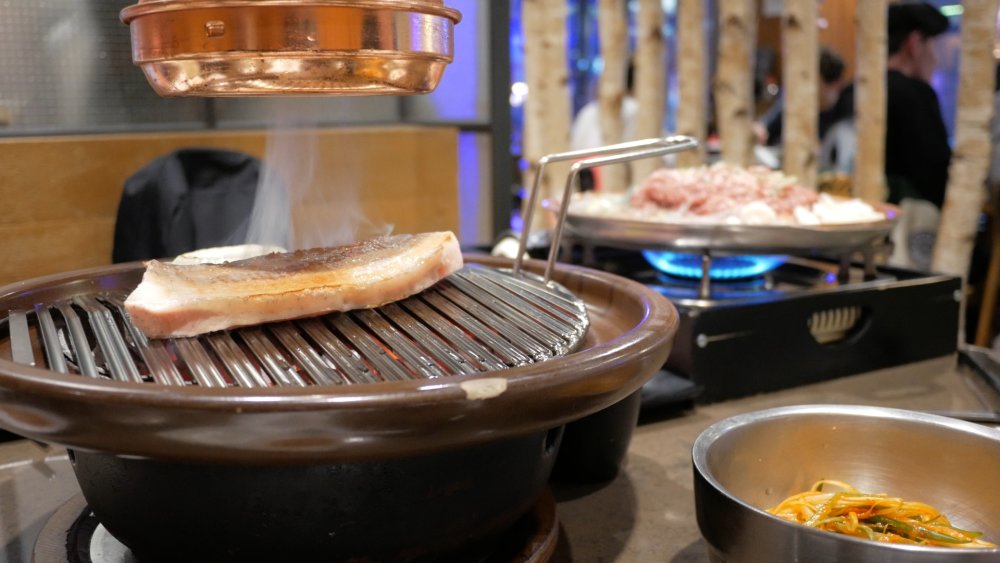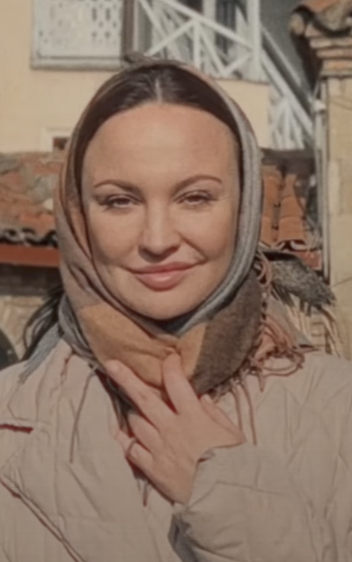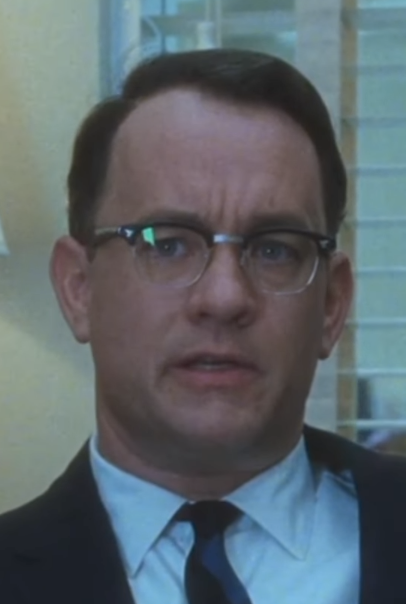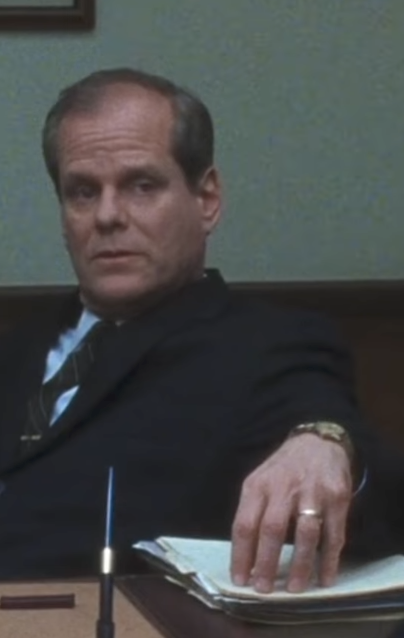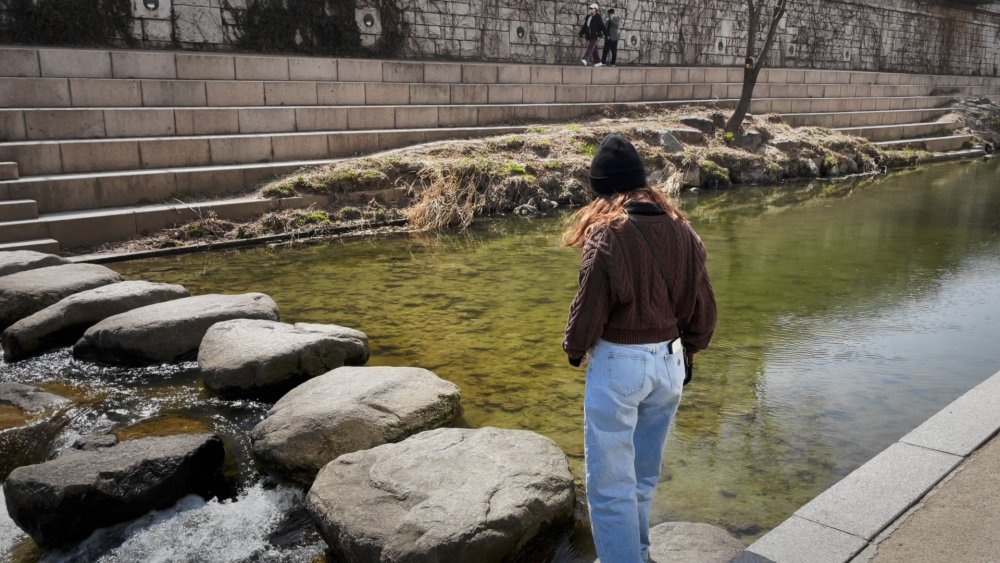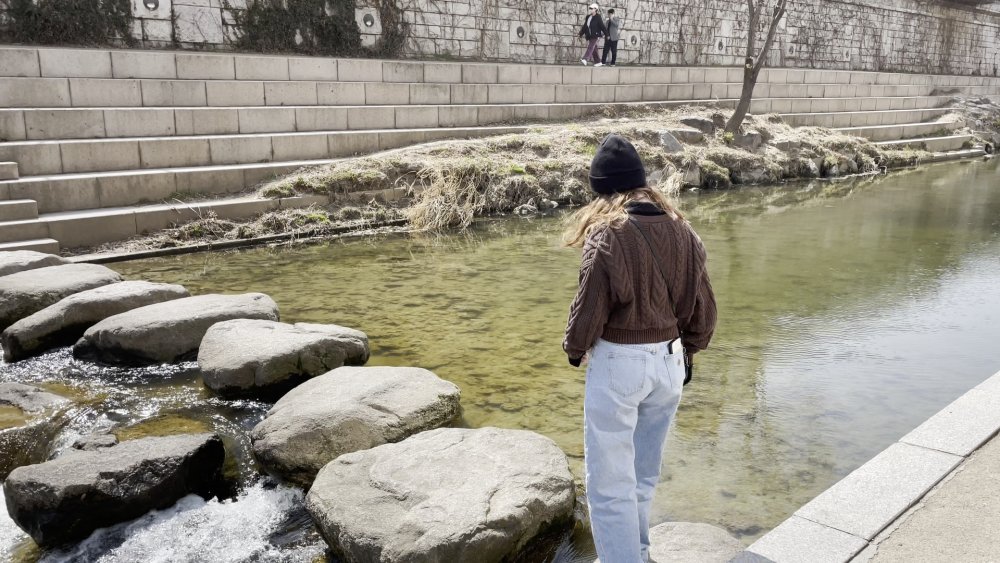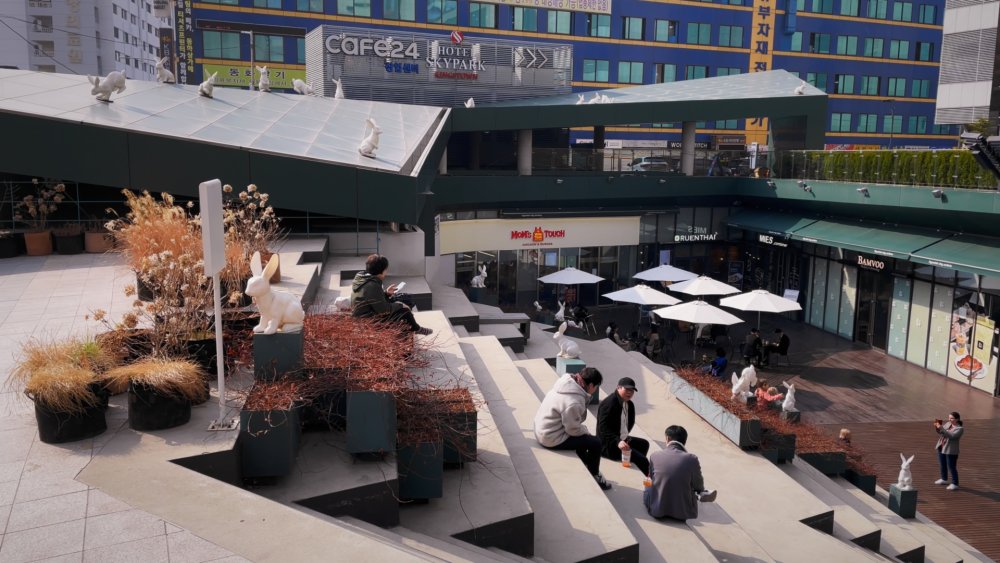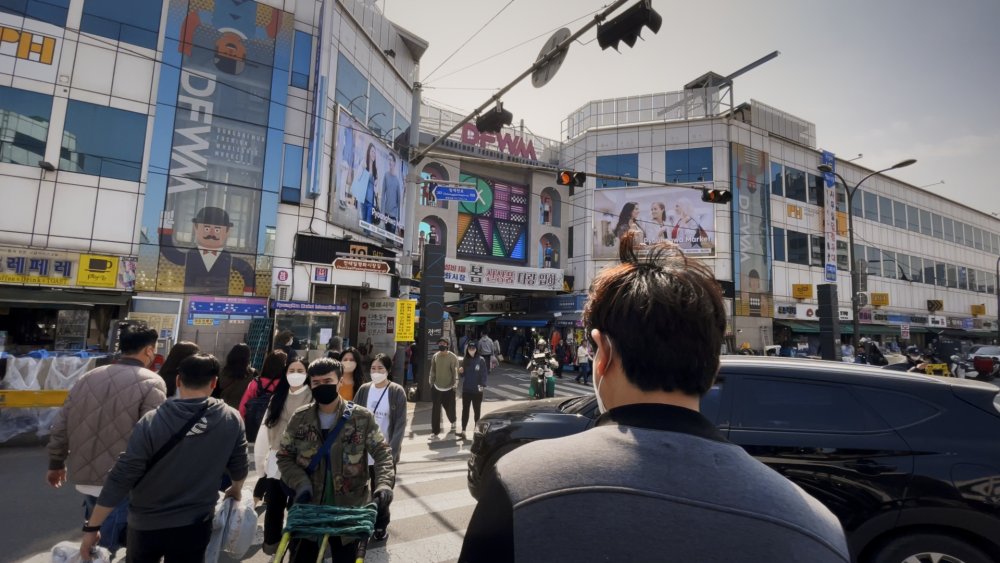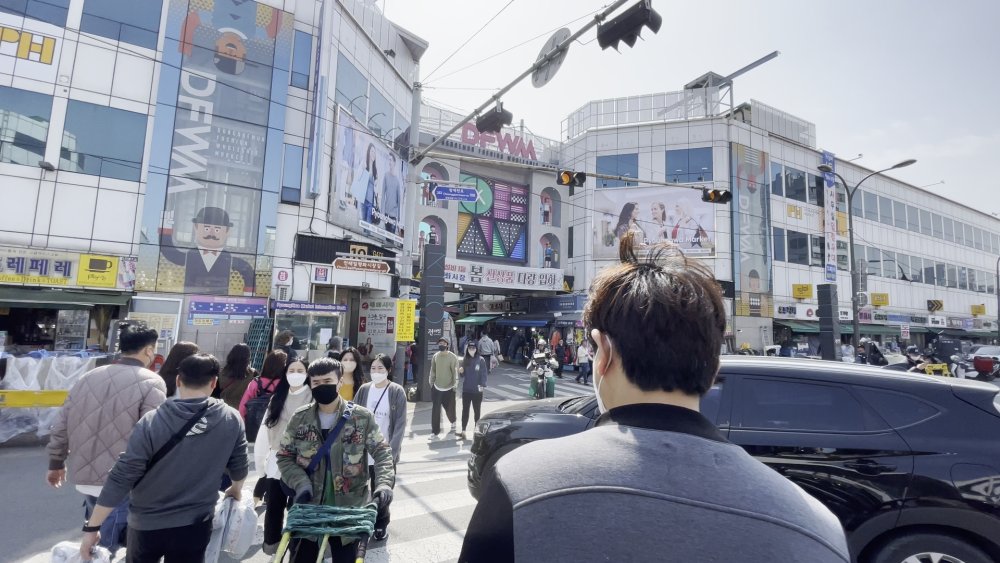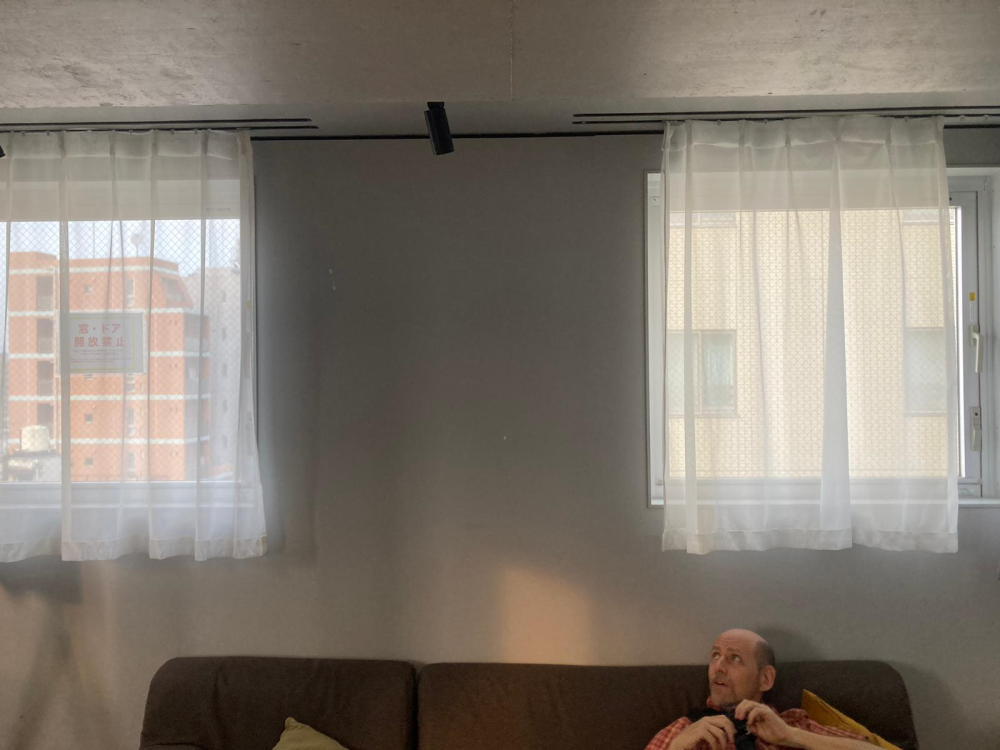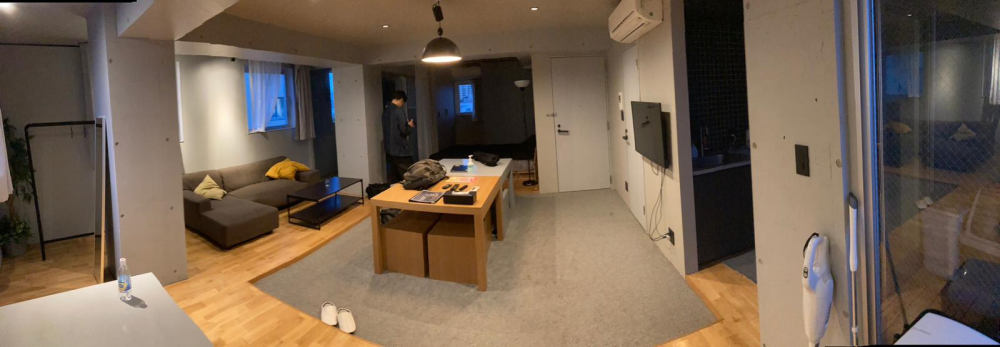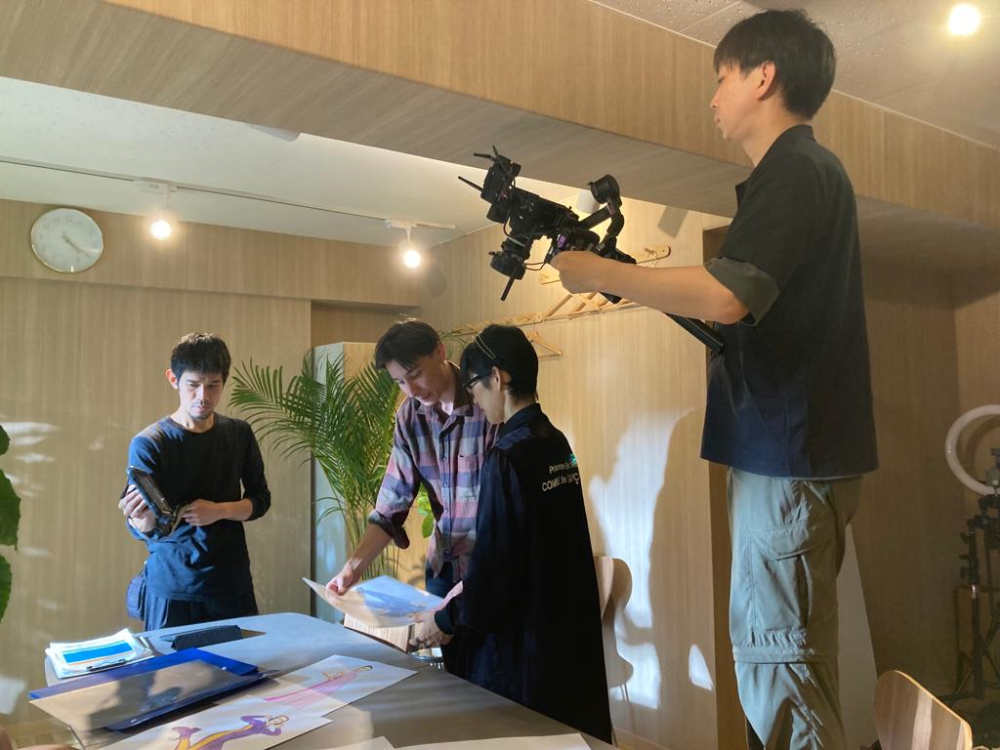Leaderboard
Popular Content
Showing content with the highest reputation on 06/13/2023 in all areas
-
Lots of them are, but as you brought it up, here are my impressions on the above: It's still far too sharp to be convincing - I noticed this in the first few seconds of the video - TBH my first impression was "is this the before or after footage?".. of course, once you see the before footage then it's obvious, but it didn't immediately look like film either The motion is still choppy with very short shutter speeds - this would require an VND which isn't so easy to attach to your phone I think that people have some sort of hangup about resolution these days and as such don't blur things enough. For example, here are three closeups from the above video. The original footage from the iPhone: Their processed version: A couple of examples from Catch Me If You Can, which was their reference film: As you can see, their processed version is far better, but they didn't go far enough. I've developed my own power grade to "de-awesome" the footage from my iPhone 12 Mini and detailed that process here, but here's a few example frames: I'm not trying to emulate film, I'm just trying to make it match my GX85. Here are a couple of GX85 shots SOOC/ungraded for comparison: I haven't got the footage handy for the above shots, but here are a few before/afters on the iPhone from my latest project from South Korea. iPhone SOOC: iPhone Graded: iPhone SOOC: iPhone Graded: iPhone SOOC: iPhone Graded: I'm happy with the results - they're somewhere in between the native iPhone look (which I've named "MAXIMUM AWESOME BRO BANGER FOR THE 'GRAM") and a vintage cinema look. My goal was to make the camera neutral and disappear so that you don't think about it - neither great nor terrible. Going back to Dehancer / Filmbox / Filmconvert / etc.. these are great plugins actually and I would recommend them to people if they want the look. I didn't go with them because I wanted to build the skills myself, so essentially I'm doing it the hard way lol. The only thing I'd really recommend is for people to actually look at real film in detail, rather than just playing with the knobs until it looks kind of what they think that film might have looked like the last time they looked which wasn't recently... I keep banging on about it because it's obvious people have forgotten what it really looks like, or never knew in the first place. And while they're actually looking at real examples of film, they should look at real examples of digital from Hollywood too - even those are far less sharp than people think. The "cinematic" videos on YT are all so much sharper than anything being screened in cinemas that it's practically a joke, except the YT people aren't in on it.6 points
-
I was quite excited when Apple introduced prores support, thinking that it would mean that images would be more organic and less digital-looking, but wow was I wrong - they were more processed than ever. I think the truth is hiding partly behind that processing, where the RAW image from them would struggle in comparison. I shot clips at night on my iPhone as well as other cameras, and I noticed that the wide angle camera on my iPhone was seriously bad after sunset - even for my own home video standards. I did a low-light test and worked out that the iPhone 12 mini normal camera had about the same amount of noise as the GX85 at F2.8, but the iPhone wide camera was equivalent to the GX85 at F8! and that was AFTER the iPhone processing, which would be way heavier than the GX85 which had NR set to -5. Apple says that the wide camera is F2.4, so basically the GX85 has about a 3-stop noise advantage. There are lots of situations where F8 isn't enough exposure. I'm not sure where we're at in terms of low light performance, but this article says that this Canon camera at ISO 4 million can detect single photons, so there is a definite limit to how large each photosite can be. Of course, more MP = less light in each one. In terms of my travels, I still prefer the GX85 to the iPhone when I can - being a dedicated camera it has lots of advantages over a smartphone.3 points
-
3 points
-
We all have features we'd like to see on the next round of cameras, even if that feature is "the same but cheaper", but what features do the more modern cameras have that you would give up? Some might question why we'd want to give anything up, but in general terms, every feature costs money to manufacture or design or do R&D, and many features require extra battery capacity, make the camera larger, make it less reliable, etc. This is likely to be controversial, so please remember that we all use our cameras differently! I'll go first, to set the stage / start the fight: Resolution I don't need 8K, or even 6K. I'd be happy with a 5K sensor because it allows downsampling to 1080p even with a 2x digital crop. All-else-being-equal, a 5K sensor would have better battery life, better rolling shutter, and better low-light performance than an 8K one. I'd also be happy to give up any output modes greater than 4K, or even 1080p. Dynamic range I don't need anything more than about 12 stops, in fact it creates issues in post when trying to "fit" the whole DR into a rec709 output file. Also, the less DR the sensor has, the less stretched the codecs bit-depth is - 14 stops of DR requires a 12-bit log file to match the quality of fitting 12 stops of DR in a 10-bit log file. This means that the 10-bit log profile on your 14 stop camera is only as good as a 12 stop camera was with a 8-bit log file, and I've had colour quantising issues with those in the past. External RAW An external recorder (plus the cables, extra batteries, extra chargers, etc) is too large and heavy for me to basically ever use. If no consumer cameras offered external RAW then they'd be forced to get off their a$$es and improve the internal codecs, offering things like All-I in all resolutions/framerates, as well as paying attention to things like how to change WB in post (there is no reason why compressed codecs can't be as flexible in post as RAW - it's only because they implemented crap codecs/profiles) - the Prores from the OG BMPCC is night-and-day better than the 10-bit log from other cameras. ....and show me a single consumer camera that supports a 12-bit compressed codec - I don't know of a single one, yet they're all falling over themselves to give external RAW at firehose bitrates. What would you prefer you weren't paying for / carrying around?2 points
-
I use a 6k timeline and upscale my 4K but then export the finished production as 4k. The amount of 4k is maybe 20-25% but I’m not the techiest of guys when it comes to this kind of thing so go on ‘if it looks right it is right’. I’m guessing this might be why editing these days on my M1 chip MacBook Pro feels like wading through mud? Just ordered a 16 inch M2max version to replace it and a desktop so I can do photo and video on it. Currently doing photo on the desktop and that is always mud wading 🤪2 points
-
Andrew posted on his twitter that Iphone 6s was really something colorwise and after that it became that color went downhills. You can check his og post yourself. Loved the look of "Tangerine". That was shot on an even older iphone model 4, i think. Motioncam app looks nice. Storage and other aspects are "a bit" of a hassle though.2 points
-

iPhone * Dehancer
kye and one other reacted to Benjamin Hilton for a topic
That's kind of the thing. Phones can look great, but overall are really tough to film anything serious with. For stuff like Kye is doing and with the right post processing, they can look great. But for more serious narrative or doc work, they are really the wrong tool for the job. Weird HDR, internal storage limitations, overheating, warpy stabilization, hard to manual focus, lens limitations, ND filter hangups, the list goes on and on. If it's all you have, use it. But I would never recommend buying a phone as a camera specifically. You can basically sink that $600-800 into any basic DSLR setup and not only get a better image, but also save yourself a world of headache with actual usability.2 points -

Panasonic S5 II (What does Panasonic have up their sleeve?)
Thpriest and one other reacted to hyalinejim for a topic
New firmwares today "NEW Firmware 13th June 2023 The LUMIX S5II v2 firmware update will offer RAW data output over HDMI (Requires Software Upgrade Key DWW-SFU2). In addition to ProRes RAW, Blackmagic RAW will now be available. Improved image quality when shooting with V-log. Live View Composite, which is pre-installed on the LUMIX S5IIX, is also among the new features included in the firmware update. Lumix S5IIX v1.1 Improved performance - Improved image quality when shooting with V-log. - Improved compatibility with some SD cards. - Improved operational stability. See: https://www.panasonic. com/global/consumer/lumix/s/firmware_update.html or https://av.jpn.support.panasonic. com/support/global/cs/dsc/download/index4.html "2 points -
As someone who loves shooting raw video, on FF, I don't think I could give up anything I currently have, but my dream camera would be an uncompressed raw 2K/4K camera with IBIS.1 point
-

Panasonic S5 II (What does Panasonic have up their sleeve?)
Juank reacted to hyalinejim for a topic
Ha ha! Nobody knows yet. Colours are the same. The red clipping problem is different, but not gone. Shadow banding remains. Interestingly, that shot was with a Canon 70-200 f4 with Sigma Mc21. So with the new firmware maybe the camera can now do chromatic aberration correction with other lenses. It would have been a bit easier if they just told us what they did 😂1 point -

What would you give up?
PannySVHS reacted to fuzzynormal for a topic
I really enjoy the field shooting flexibility good IBIS allows. Once one knows how to really use it as a videographer it can become indispensable. As a guy that loves shooting on sticks that no small admission.1 point -

Blackmagic Micro Cinema Super Guide and Why It Still Matters
kye reacted to Benjamin Hilton for a topic
This is 100% spot on. I have a workflow I use for specific cameras. My standard color science is dropped onto my 5" monitor via LUT. In post I apply the same color science with minimal corrections. Sometimes I go on to do a specific grade, but 90% of the time I stick with that because it looks fantastic. This workflow is really awesome because I can really trust what I see on the monitor and fix problems in camera as I go.1 point -

What would you give up?
PannySVHS reacted to Benjamin Hilton for a topic
IBIS is way too useful of a tool to give up. It's not a replacement for anything, all old school tools still have their place, it's just another really useful tool at times. For doc work I can't tell you how many times I would have killed to have some form of IBIS on a shot and didn't have it back in the day. I do steadicam and tripod work a lot, but I can't tell you how amazing it has been to be able to grab a shot at 200mm with the camera balanced on my knee or pressed up against a wall and it actually look rock solid with IBIS.1 point -
I feel it is useful for a ton of people. I would assume run and gun/vlog/youtube style shooting is what the majority of camera users are doing these days. I feel Industry industry shoots are not the majority of what cameras are being used for. A super formal shoot is probably using a cinema camera although hybrids are sometimes used.1 point
-
@kye Great addition! : ) Now try to find the same elsewhere! Priceless community we have here. @Andrew Reidthis place of yours should have its recognition as of public interest body. EAG :- )1 point
-
One of the (potentially numerous) differences when swapping from 4K to 6K (on a 4K timeline) is that the downsampling goes from being before the compression to afterwards. Compression is one of the significant contributors to the digital look IMHO (just compare RAW vs compressed images side by side), and if you can downsample from 6K to 4K in post then you're downsampling and also interpolating (blurring) the compression artefacts that happen on edges. I would favour a workflow where the image is debayered, downscaled, then recorded to SD with very low or even no compression. It would effectively have the benefits of downsampling and the benefits of RAW, but without the huge file sizes of RAW at the native resolution of the sensor. Of course, no-one else thinks this is a good idea, so....1 point
-
You might not have any need for it so the term is ‘I’ not ‘we’ 😜 I’m really not sure why we don’t have more cameras with internal ND but read it is possibly an IBIS clash ‘thing’? I would like both personally but horses for courses and all that…1 point
-
I find IBIS to be critical to my workflow personally, as I shoot exclusively handheld and do so while walking etc, but I definitely understand that I'm in the minority. But yeah, having that eND would be spectacular - set to auto-ISO / auto-eND / 180 shutter / desired aperture for background defocus and you're good to go!1 point
-
No Marty, actually not, only Mike's irony here. I had been not so creative! : D1 point
-
More pictures and less talk, good example.1 point
-
@PPNSI'd take any older cinema camera, eg Arri Alexa Classic, Red Epic, Sony F55, Ursa etc, as well as the BMMCC (which, for whoever has used it extensively, is a cinema camera, regardless the initial 'crash camera' marketing) over any newer Mirrorless (Lumix (I love their cameras by the way), Sony (haven't used the A7s III so I can't comment), Canon, Fuji, etc), at any type of work (of course not necessarily Instagram run and gun etc) But that's just me, based on years of testing. Every other opinion is welcomed of course. But since we're talking about the BMMCC here, yes it's a perfectly cinema camera for me. @kye& @TomTheDPcool posts!1 point
-
It is not easy for me to like a forum post when the nice parts are mixed with some akward personal call outs. Some of the assumptions about one and another sound like there is a desire for misunderstanding eachother. Makes me leave the thread and topic behind. Certain advises and especially some so called advises are better off by being sent as private personal message. Some hassles can be light enterainment, but the border of becoming unbearable is close enough.1 point
-

Panasonic S5 II (What does Panasonic have up their sleeve?)
newfoundmass reacted to BTM_Pix for a topic
So after what can only be described as a Devon Loch moment (ask your Dad) in the absolutely nailed on not going to change my mind purchase of a Nikon Z8, I now find myself joining you as a fellow Panasonic S5ii owner. I had been struggling with the sunk cost fallacy aspect of buying the Z8 as a way of stopping my collection of pro Nikon glass collecting dust in the Peli cases but eventually bit the bullet and accepted reality. The Z8 would indeed have given them an extended life but I’m not going to be hauling big f2.8 teles and zooms around with me any more so would you have eventually have to have caved and built up a Z mount collection to go with it. Financially, that would be out of the question anyway and I couldn’t ignore the value proposition of the S5ii route. So, after a bit of judicious choice of a combination of used and new offers and bundles, I’ve managed to acquire all of the following for roughly the same price as the Z8 and one of its Cf cards. Panasonic S5ii Panasonic 20-60mm f3.5-5.6 Panasonic 35mm f1.8 Panasonic 50mm f1.8 Panasonic 85mm f1.8 Sigma MC-21 EF-L adapter Sigma 16-28mm f2.8 Sigma EVF for my Fp As I have other L mount cameras (Leica SL and Sigma Fp) this collection will benefit all of them. As I say, the value of getting not just a camera but three fast-ish primes, a very interesting kit zoom, a fast ultra wide zoom, the EF adapter and the long awaited completing part of my Fp puzzle couldn’t be ignored. And all of them are light and compact compared to what I would’ve been rocking on the Z8. Essentially, I went in for what I thought at my age might be a forever camera and walked out with my forever lens mount instead. First impressions are that I don’t know enough about it yet to have any. It’s not to say I haven’t used it but it’s on all default settings, I haven’t really read the manual and I’m here on holiday so I haven’t/won’t put in the work to have a better feel for it. I’ll also defer judgement until after the imminent firmware update. On a surface level, I’ve found the IBIS to be fairly impressive but the AF, whilst a huge leap forward over other L mount cameras that I’ve got, can be a bit of a mixed bag in lower light, particularly the face detect. Again, I’ve got everything on default so I’m sure it can be tuned to be better. What I will say as well is that the Sigma 16-28mm f2.8 is worth a look for anyone contemplating it.1 point -
....and in todays episode of "the camera YT echo-chamber doesn't know shit about the real world", here's a real-world and very high-end studio shooting VFX background plates with a gazillion BGH1 units, or arrays of GH5S paired with 12-35mm f2.8 zooms. Their website indicates they've worked on Joker, Stranger Things, Mission Impossible, and dozens of other high-end productions. The thumbnail appears to show 17 BGH1 units: One shot from the Stranger Things rig detailed on their website shows "our standard nine camera array" is 9 x GH5S units - 5 at the back (with two facing sideways) and 3 on the front: To all those who suggest that the size/weight advantage from MFT is gone, their page says "The rig was still able to fly as luggage and efficiently attach to a rental car, all while being street legal." How much does a 24-70mm F2.8 weigh again? If you can't remember then the short answer is more than double the MFT equivalent. In the video he talks about how each BGH1 + lens is about 1lb, and keeping the weight down allows them to rig the car up in such a way that keeps them from needing increased permitting and things like escort cars (which for 360 cameras appear in the shot). So, the GH5S (2018) and BGH1 (2020 - 3 years old), which aren't FF, don't shoot RAW, don't have IBIS, and have been completely forgotten by the entire camera YT echo-chamber, are being actively used on some of the biggest and most VFX heavy films being made in Hollywood. They also just casually mention in the video (11:35 if you don't believe me) they've been involved in over 2000 productions, and that "these cameras are able to match perfectly with all your A-cameras".1 point
-
Blackmagic Micro Cinema Super Guide and Why It Still Matters
solovetski reacted to TomTheDP for a topic
Things used to be a lot more conventional. Films tended to carry the look of the film stock they were shot on. Nowadays it is easy to go crazy with exposure as you have a 100% accurate monitor to reference. On top of that everything is digitally color graded to the point where it can be hard to tell what camera they were shot on. Though I can still often tell as the sensor/color of the camera often seems to shine through the manipulation. That isn't always the case of course. But regardless it's all just personal preference. Take Roger Deakins for instance. He prefers to do everything in camera, where as others will do a large amount in post. But in terms of the Alexa having a clean image I agree to some extent. At least compared to film it is cleaner, higher dynamic range(maybe), and probably sharper. That is just taking into consideration the Alexa Classic sensor. These are all conclusions Deakins had after shooting with the Classic on his first digital film "In Time". His word isn't God but he certainly had his fair share of experience shooting 35mm film content. I have never shot on 35mm film only for photography. That is a 12 year old camera, now we have higher resolutions from ARRI, 3.2k, 4.5k, or 6k rather than 2.8k, RAW recording, even higher dynamic range. But what I will say is at base iso of 800 the Alexa Classic isn't particularly clean. I tend to shoot 200-400 when I want really clean footage. That said it has a nice clean texture, meaning the noise is pretty consistent, lacking in color noise unless you really under expose badly. I rate the Alexa at 1600 iso, which again isn't clean but it's pleasant. That gives you 7 stops of highlight latitude but not much in underexposure. Most other cameras fair worse. Deakins commented on cameras looking too digital. He doesn't care much for emulating film but did admit the Alexa has a natural texture and if that were to go away you might be left with something too clinical and lifeless. I guess the Alexa 35 has in camera textures which I guess solves that issue. Deakins was one of the first to embrace digital and pretty much immediately conclude that it is superior to film, at least for him. I still look at 35mm film as the golden standard. I was brought up on it and there is something magical about it for me. In someways I was brought up on Alexa ALEV3 as well. Most of my favorite modern films were shot with that sensor tech. There are some cinematographers noticing that the Alexa 35 Alev4 sensor/pipeline feels more digital. The motion rendering, the color science. ARRI has always been known for giving true to life looking colors with nice skintones. But compared to the newer sensor the starting point on the ALEV3 cameras does have a look to it. I assume it is similar to what Blackmagic did between the older and newer cameras like you mentioned. Going from a kodak 2383 to a standard rec709 look. I suppose the option to actually shoot on film for people like me will always be there, assuming the budget allows. I've heard some very experienced cinematographers comment on how they can't seem to get the same look from digital as they do film. That may be them showing their age. Tools like Dehancer have made it a lot easier to emulate that look. I will admit I have seen a few videos that were incredibly well done in terms of film emulation. Although I would say they are the minority. I just prefer to get it in camera especially considering I am often not involved in post. Again that is just me and I am in the minority.1 point -

What would you give up?
Cosimo reacted to Benjamin Hilton for a topic
I'd give up resolution, viewfinder, any type of raw, photo capabilities. In my book the perfect camera would 14+ stops of real dynamic range, solid 4k up to 120fps, good IBIS, autofocus, ND filters... The only things that hits really close to all of that is the Sony FX6, but it's a bit out of what I can afford. Thinking of picking up a used FS7 one of these days as the prices come down1 point -
I would give up all three as long as DR remained in the 12-13 stop territory.1 point
-
Personally anything external as in I prefer (and only use) internal in order to keep my set up as small and light as possible. Juggling multiple bodies, for me it needs to be thus.1 point



